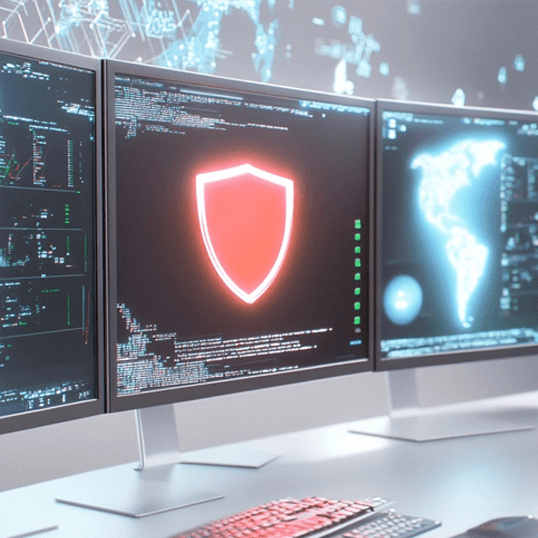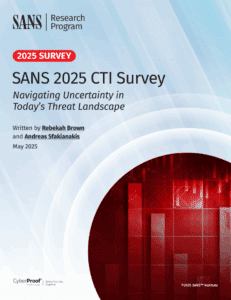In today’s digital landscape, cybersecurity threats are evolving at an unprecedented pace, leaving organizations struggling to keep up. Traditional security models, which often rely on perimeter defenses and siloed threat detection systems, are no longer sufficient to combat the sophisticated and persistent attacks launched by today’s threat actors. This is where Managed Extended Detection and Response (Managed XDR) comes into play.
Managed XDR represents a transformative approach to cybersecurity, combining advanced technology with human expertise to provide comprehensive threat detection, investigation, and response across an organization’s entire IT ecosystem. By integrating multiple security technologies and data sources into a unified platform, Managed XDR delivers enhanced visibility and faster response times, enabling organizations to stay ahead of cyber threats.
This article delves into the core aspects of Managed XDR, exploring its components, benefits, and the critical role it plays in modern cybersecurity strategies. We will also examine how Managed XDR enhances the security posture of organizations, the importance of the Security Operations Center (SOC) in this context, and the key factors to consider when choosing a Managed XDR service provider. Whether you are a CISO, CIO, or SOC Manager, this comprehensive guide will provide valuable insights into how Managed XDR can help safeguard your organization against the ever-changing threat landscape.
Understanding Managed XDR
Definition and Overview
Managed Extended Detection and Response (Managed XDR) is a holistic security service that combines advanced detection and response capabilities with outsourced human expertise. Often referred to as XDR as a Service or XDRaaS, Managed XDR builds on the foundational principles of Managed Detection and Response (MDR) and Extended Detection and Response (XDR) to offer comprehensive protection across various security sources, including email, cloud, servers, and networks.
Managed XDR leverages cutting-edge technologies and human-led services to enable robust data collection, correlation, continuous threat hunting, monitoring, and incident response. By integrating these capabilities into a single managed service, organizations gain end-to-end visibility across their entire attack surface. This allows for 24/7 monitoring, rapid detection of threats, and efficient response to security incidents.
At its core, Managed XDR aims to address the limitations posed by traditional security models, which often struggle with siloed operations and lack of comprehensive visibility. By streamlining security data ingestion, analysis, and workflows across an organization’s entire security stack, Managed XDR enhances visibility into hidden and advanced threats, ensuring a unified and proactive response to cyber threats.
Benefits Over Traditional Security Models
Managed XDR offers several significant advantages over traditional security models, making it an essential component of modern cybersecurity strategies:
- Enhanced Visibility:
- Managed XDR provides a unified view of the entire IT environment, including endpoints, networks, and cloud infrastructures. This holistic visibility enables security teams to detect and respond to threats more effectively, reducing the likelihood of blind spots that adversaries can exploit.
- Improved Threat Detection and Response:
- By leveraging advanced analytics, machine learning, and AI-driven algorithms, Managed XDR enhances threat detection capabilities. It can identify and respond to sophisticated and evasive threats that traditional security tools might miss. This results in faster detection and mitigation of cyber threats, minimizing potential damage.
- Cost Efficiency:
- Implementing and maintaining a comprehensive security infrastructure can be costly and resource-intensive. Managed XDR, delivered as a service, offers a cost-effective solution by consolidating various security tools and services into a single, managed platform. This reduces the total cost of ownership and allows organizations to allocate resources more efficiently.
- Scalability and Flexibility:
- Managed XDR services are designed to scale with the needs of the organization. Whether a company is expanding its IT infrastructure or adopting new technologies, Managed XDR can adapt to provide continuous protection. This flexibility ensures that the security measures remain robust and effective, regardless of the changes in the organization’s environment.
- Proactive Threat Hunting:
- Traditional security models often rely on reactive measures, addressing threats after they have been detected. Managed XDR incorporates proactive threat hunting, where security experts actively search for signs of malicious activity within the network. This proactive approach helps identify and mitigate threats before they can cause significant harm.
- Resource Optimization:
- The cybersecurity skills gap is a well-documented challenge. Managed XDR addresses this by providing access to a team of experienced security professionals who augment the internal IT and security teams. This not only helps bridge the skills gap but also allows internal teams to focus on strategic initiatives rather than routine security tasks.
- Compliance and Reporting:
- Managed XDR services often include comprehensive reporting and compliance management features. This is crucial for organizations that must adhere to regulatory requirements and industry standards. By providing detailed insights and reports, Managed XDR ensures that organizations can demonstrate compliance and maintain a strong security posture.
In summary, Managed XDR offers a transformative approach to cybersecurity by combining advanced technology with expert human intervention. Its ability to provide enhanced visibility, improve threat detection and response, and deliver cost-efficient, scalable, and proactive security measures makes it a vital component of any modern cybersecurity strategy. As organizations continue to face increasingly sophisticated cyber threats, the adoption of Managed XDR will be instrumental in safeguarding their digital assets and maintaining operational resilience.
Key Components of Managed XDR
Endpoint Detection and Response (EDR)
Endpoint Detection and Response (EDR) is a foundational component of Managed XDR. EDR solutions focus on monitoring, detecting, and responding to threats on endpoints such as laptops, desktops, and servers. This capability is essential for identifying malicious activities that may bypass traditional antivirus solutions.
EDR solutions work by deploying software agents or sensors on endpoints to collect data and monitor for suspicious activities. This data is then sent to a centralized repository for analysis. Advanced EDR solutions use behavioral analysis and machine learning to detect anomalies and potential threats in real-time. When a threat is detected, EDR systems can take automated actions, such as isolating the affected endpoint from the network, killing malicious processes, and initiating incident response protocols.
In the context of Managed XDR, EDR provides the necessary visibility and control over endpoint activities, ensuring that even the most sophisticated threats can be detected and mitigated promptly. This integration of EDR into a broader XDR framework allows for seamless coordination with other security tools, enhancing overall threat detection and response capabilities.
Network Traffic Analysis (NTA)
Network Traffic Analysis (NTA) is another critical component of Managed XDR. NTA solutions monitor network traffic for signs of malicious activity, such as unusual patterns, unauthorized access attempts, and data exfiltration. By analyzing network traffic, NTA solutions can identify threats that might not be visible at the endpoint level.
NTA works by capturing and analyzing data packets as they traverse the network. This analysis includes examining packet headers, payloads, and communication patterns to detect anomalies and potential threats. NTA solutions often employ machine learning and advanced analytics to differentiate between normal network behavior and suspicious activities.
Incorporating NTA into Managed XDR enhances the ability to detect threats across the entire network, providing a comprehensive view of the organization’s security posture. This holistic approach ensures that threats are identified and addressed at multiple points within the IT infrastructure, reducing the risk of successful attacks.
Cloud Security
As organizations increasingly migrate to cloud environments, ensuring robust cloud security has become paramount. Managed XDR includes advanced cloud security measures to protect cloud-based assets and workloads from cyber threats.
Cloud security within Managed XDR encompasses several key areas:
- Cloud Security Posture Management (CSPM):
- CSPM solutions continuously monitor cloud environments to identify and remediate misconfigurations and compliance issues. By providing visibility into the security posture of cloud resources, CSPM helps prevent vulnerabilities that attackers could exploit.
- Cloud Access Security Broker (CASB):
- CASB solutions act as intermediaries between cloud service providers and end-users, enforcing security policies and providing visibility into cloud usage. CASBs help protect sensitive data by monitoring and controlling access to cloud applications and services.
- Cloud Workload Protection Platforms (CWPP):
- CWPP solutions focus on securing cloud workloads, including virtual machines, containers, and serverless functions. These platforms provide threat detection, vulnerability management, and compliance monitoring for cloud-native applications.
- Integration with Cloud-native Security Tools:
- Managed XDR leverages cloud-native security tools provided by cloud service providers, such as AWS GuardDuty, Azure Security Center, and Google Cloud Security Command Center. These tools offer deep integration with the cloud environment, enhancing threat detection and response capabilities.
By integrating these cloud security measures, Managed XDR ensures comprehensive protection for cloud-based assets, helping organizations secure their cloud environments against a wide range of cyber threats.
In summary, the key components of Managed XDR—Endpoint Detection and Response (EDR), Network Traffic Analysis (NTA), and Cloud Security—work together to provide a robust and integrated security framework. This combination of capabilities ensures that organizations can effectively detect, investigate, and respond to threats across their entire IT ecosystem, from endpoints to networks and cloud environments. As cyber threats continue to evolve, the comprehensive protection offered by Managed XDR will be essential in maintaining a strong security posture and safeguarding critical assets.
The Role of the Security Operations Center (SOC)
Continuous Monitoring and Threat Detection
The Security Operations Center (SOC) is the nerve center of any Managed XDR solution. It is a centralized unit responsible for continuously monitoring an organization’s IT environment for signs of malicious activity and potential threats. The SOC operates 24/7, ensuring that security incidents are detected and addressed in real-time, minimizing the risk of data breaches and other cyber incidents.
Key Responsibilities of the SOC:
- Continuous Monitoring:
- The SOC employs a range of tools and technologies to monitor network traffic, endpoints, cloud environments, and applications. This continuous surveillance allows for the timely detection of anomalies and suspicious activities that may indicate a security threat.
- Threat Detection:
- Using advanced analytics, machine learning, and AI, the SOC can identify patterns and behaviors indicative of cyber threats. This proactive approach enables the early detection of both known and unknown threats, enhancing the organization’s ability to respond swiftly.
- Alert Management:
- The SOC is responsible for managing and prioritizing security alerts. By filtering out false positives and low-priority alerts, the SOC ensures that critical threats receive immediate attention. This prioritization helps to streamline incident response processes and reduces the burden on security teams.
- Threat Intelligence Integration:
- The SOC integrates threat intelligence feeds to stay updated on the latest threat actors, tactics, techniques, and procedures (TTPs). This information enhances the SOC’s ability to detect emerging threats and adapt to the evolving cyber threat landscape.
- Incident Triage and Analysis:
- When a potential threat is detected, the SOC conducts a thorough analysis to determine the severity and impact of the incident. This triage process involves collecting and correlating data from various sources to gain a comprehensive understanding of the threat.
Incident Response and Threat Hunting
Beyond continuous monitoring and detection, the SOC plays a crucial role in incident response and threat hunting. These activities are essential for mitigating the impact of security incidents and proactively identifying threats before they can cause significant harm.
Incident Response:
- Preparation and Planning:
- The SOC develops and maintains incident response plans that outline the procedures for addressing various types of security incidents. These plans ensure that the organization is prepared to respond effectively to any threat.
- Detection and Analysis:
- When an incident is detected, the SOC initiates the response process by analyzing the nature and scope of the threat. This involves identifying affected systems, assessing the extent of the compromise, and determining the attacker’s objectives.
- Containment and Eradication:
- The SOC takes immediate action to contain the threat and prevent further damage. This may involve isolating affected systems, blocking malicious IP addresses, and removing malware. The goal is to eradicate the threat from the environment and ensure that it cannot reoccur.
- Recovery and Remediation:
- After the threat has been neutralized, the SOC works to restore affected systems to their normal state. This includes repairing any damage caused by the attack, implementing additional security measures, and conducting a thorough review to identify areas for improvement.
- Post-Incident Analysis:
- Following an incident, the SOC conducts a post-mortem analysis to understand what happened and how it was addressed. This analysis helps to refine incident response plans, improve detection capabilities, and prevent future incidents.
Threat Hunting:
- Proactive Search for Threats:
- Threat hunting involves proactively searching for signs of malicious activity within the network that may have gone undetected by automated tools. SOC analysts use various techniques, including hypothesis-driven investigations and data analytics, to uncover hidden threats.
- Hypothesis Development:
- SOC analysts develop hypotheses based on threat intelligence, historical data, and known attack patterns. These hypotheses guide the threat hunting process, helping analysts focus on specific areas of the network where threats are likely to reside.
- Advanced Analytics:
- Using advanced analytics and machine learning, SOC analysts can identify subtle indicators of compromise (IoCs) that may indicate the presence of a threat. This includes analyzing network traffic, endpoint behaviors, and user activities for anomalies.
- Collaboration with Other Teams:
- Threat hunting is a collaborative effort that involves working closely with other security teams, including incident response, threat intelligence, and vulnerability management. This collaboration ensures that all aspects of the threat are thoroughly investigated and addressed.
- Continuous Improvement:
- The insights gained from threat hunting activities are used to continuously improve the organization’s security posture. This includes refining detection rules, enhancing response procedures, and updating threat intelligence.
In conclusion, the SOC is a critical component of Managed XDR, providing continuous monitoring, threat detection, incident response, and threat hunting capabilities. By integrating these functions into a centralized unit, the SOC enhances the organization’s ability to detect and respond to threats in real-time, ensuring a robust and resilient security posture. As cyber threats continue to evolve, the role of the SOC will become increasingly important in safeguarding the organization’s digital assets and maintaining operational continuity.
Enhancing Security Posture with Managed XDR
Threat Intelligence and Vulnerability Management
Effective cybersecurity relies heavily on having access to timely and actionable threat intelligence, as well as robust vulnerability management practices. Managed XDR incorporates these elements to significantly enhance an organization’s security posture.
Threat Intelligence:
- Continuous Threat Intelligence Integration:
- Managed XDR solutions integrate threat intelligence from multiple sources, including global threat databases, industry-specific feeds, and proprietary research. This comprehensive approach ensures that the SOC is always informed about the latest threats, tactics, techniques, and procedures (TTPs) employed by threat actors.
- Contextualized Threat Data:
- Threat intelligence in Managed XDR is not just raw data. It is enriched with context, providing insights into the relevance and severity of threats in the specific organizational context. This enables security teams to prioritize threats that pose the highest risk and take appropriate actions swiftly.
- Proactive Threat Hunting:
- Using threat intelligence, Managed XDR enables proactive threat hunting. Analysts can develop hypotheses and search for indicators of compromise (IoCs) related to the latest threats, ensuring that potential attacks are identified and mitigated before they can cause significant damage.
- Strategic Threat Mitigation:
- Threat intelligence helps organizations move from a reactive to a proactive security posture. By understanding the motivations and methods of attackers, security teams can implement strategic defenses to mitigate risks and prevent future attacks.
Vulnerability Management:
- Continuous Vulnerability Assessment:
- Managed XDR includes continuous vulnerability assessment to identify weaknesses in the IT infrastructure. This ongoing process involves scanning for vulnerabilities in systems, applications, and network devices to ensure that potential entry points for attackers are identified promptly.
- Prioritization of Vulnerabilities:
- Not all vulnerabilities pose the same level of risk. Managed XDR uses threat intelligence to prioritize vulnerabilities based on factors such as exploitability, potential impact, and the presence of active threats. This prioritization ensures that the most critical vulnerabilities are addressed first.
- Automated Patch Management:
- Effective vulnerability management includes automated patch management processes. Managed XDR solutions can deploy patches and updates across the organization’s IT environment, reducing the window of exposure and minimizing the risk of exploitation.
- Regulatory Compliance:
- Many industries are subject to regulatory requirements that mandate specific vulnerability management practices. Managed XDR helps organizations maintain compliance by ensuring that all necessary security measures are in place and regularly updated.
- Reporting and Metrics:
- Managed XDR provides detailed reporting on vulnerability management activities, including metrics on the number of vulnerabilities identified, prioritized, and remediated. These reports are essential for demonstrating compliance and assessing the effectiveness of security measures.
Automation and AI in Managed XDR
Automation and artificial intelligence (AI) play a pivotal role in enhancing the capabilities of Managed XDR. By leveraging these technologies, Managed XDR solutions can provide faster, more accurate threat detection and response, significantly improving the organization’s security posture.
Automation:
- Automated Threat Detection:
- Automation enables the continuous monitoring and analysis of security data without human intervention. Automated threat detection systems can quickly identify and flag potential threats, allowing for immediate action to be taken.
- Automated Response and Remediation:
- Managed XDR solutions can automate certain response actions, such as isolating infected endpoints, blocking malicious IP addresses, and deploying patches. This rapid response capability minimizes the time between threat detection and mitigation, reducing the potential impact of attacks.
- Workflow Automation:
- Automation streamlines security workflows by managing alert triage, incident prioritization, and case management. This reduces the workload on security teams and ensures that critical incidents are addressed promptly and efficiently.
- Consistency and Reliability:
- Automated processes ensure consistency in threat detection and response. Unlike manual processes, which can be prone to human error, automated systems follow predefined rules and procedures, ensuring reliable and repeatable outcomes.
Artificial Intelligence (AI):
- Advanced Threat Detection:
- AI-driven analytics can identify complex threat patterns that traditional methods might miss. Machine learning algorithms analyze vast amounts of security data to detect anomalies and predict potential threats, enhancing the accuracy of threat detection.
- Behavioral Analysis:
- AI can analyze user and system behaviors to establish baselines and identify deviations that may indicate malicious activity. This behavioral analysis helps detect insider threats and sophisticated attacks that do not match known threat signatures.
- Threat Intelligence Enrichment:
- AI enhances threat intelligence by correlating data from multiple sources and providing deeper insights into threat actors and their methods. This enriched intelligence supports more informed decision-making and more effective threat hunting.
- Incident Prediction and Prevention:
- Predictive analytics powered by AI can forecast potential security incidents based on historical data and current threat trends. This capability allows organizations to take preventive measures and strengthen defenses before an attack occurs.
- AI-powered Incident Response:
- AI can assist in incident response by providing recommendations for remediation actions based on the analysis of previous incidents. AI-driven systems can also automate complex incident response tasks, improving the speed and effectiveness of threat mitigation.
In conclusion, Managed XDR enhances an organization’s security posture by integrating advanced threat intelligence and robust vulnerability management practices. The use of automation and AI further amplifies these capabilities, providing faster, more accurate, and more efficient threat detection and response. As cyber threats continue to evolve, these technologies will be essential in maintaining a strong and resilient security posture, ensuring that organizations can effectively protect their digital assets and maintain operational continuity.
Choosing the Right Managed XDR Service Provider
Key Factors to Consider
Selecting the right Managed XDR service provider is crucial to maximizing the benefits of this advanced cybersecurity solution. Here are key factors to consider when evaluating potential providers:
- Expertise and Experience:
- Industry Experience: Look for providers with extensive experience in your industry. They should understand the specific threats and compliance requirements relevant to your sector.
- Track Record: Evaluate their history of successful threat detection and response. Providers with a proven track record are more likely to deliver reliable and effective services.
- Technology Integration:
- Compatibility: Ensure the Managed XDR solution is compatible with your existing security tools and infrastructure. The provider should offer seamless integration with your current systems.
- Advanced Technologies: The provider should leverage the latest technologies, including AI, machine learning, and behavioral analytics, to enhance threat detection and response capabilities.
- Comprehensive Coverage:
- Endpoint to Cloud Security: The Managed XDR solution should offer comprehensive protection across all environments, including endpoints, networks, and cloud infrastructures.
- Threat Intelligence Integration: Verify that the provider integrates global threat intelligence to stay updated on the latest threats and tactics used by adversaries.
- Scalability and Flexibility:
- Scalable Solutions: Choose a provider that can scale their services as your organization grows. This includes accommodating increased data volumes and additional endpoints.
- Flexible Deployment Models: The provider should offer flexible deployment options, such as on-premises, cloud, or hybrid solutions, to suit your specific needs.
- Proactive Threat Hunting and Incident Response:
- Proactive Measures: Ensure the provider offers proactive threat hunting services to identify and mitigate threats before they cause significant damage.
- Incident Response Capabilities: The provider should have robust incident response capabilities, including rapid detection, containment, eradication, and recovery from security incidents.
- Reporting and Compliance:
- Detailed Reporting: Look for providers that offer comprehensive and customizable reporting features. This includes real-time dashboards, regular security reports, and compliance documentation.
- Regulatory Compliance: Verify that the provider’s services meet the regulatory and compliance requirements of your industry. This is essential for maintaining compliance and avoiding penalties.
- Customer Support and Service Level Agreements (SLAs):
- 24/7 Support: The provider should offer round-the-clock customer support to address any issues promptly.
- SLAs: Review the service level agreements to understand the provider’s commitment to response times, resolution times, and overall service quality.
- Cost and Value:
- Transparent Pricing: Ensure the provider offers transparent pricing with no hidden costs. Understand the cost structure, including any additional charges for specific services or features.
- Value for Money: Evaluate the overall value offered by the provider, considering the quality of services, expertise, and the range of features included in the Managed XDR solution.
Evaluating Cost and Value
While cost is an important consideration, it should not be the sole factor in choosing a Managed XDR service provider. Here are some aspects to consider when evaluating cost and value:
- Total Cost of Ownership (TCO):
- Calculate the total cost of ownership, including initial setup fees, ongoing subscription costs, and any additional expenses for scaling the solution. Compare this to the costs of managing security in-house to determine the true financial impact.
- Cost Savings:
- Managed XDR can provide significant cost savings by reducing the need for extensive in-house security teams and expensive security tools. Consider the potential savings in personnel, training, and technology investments.
- Return on Investment (ROI):
- Assess the potential return on investment by considering the reduction in security incidents, faster incident response times, and improved overall security posture. A robust Managed XDR solution can prevent costly breaches and minimize downtime, leading to substantial ROI.
- Efficiency Gains:
- Evaluate how the Managed XDR solution can improve operational efficiency. This includes automating routine security tasks, streamlining workflows, and freeing up internal resources to focus on strategic initiatives.
- Scalability and Future-Proofing:
- Choose a provider that offers scalable solutions to accommodate future growth and technological advancements. Investing in a flexible and scalable Managed XDR service ensures that your organization can adapt to evolving security needs without incurring significant additional costs.
- Quality of Service:
- Assess the quality of service provided by evaluating customer reviews, case studies, and references. High-quality service and support can significantly enhance the value of the Managed XDR solution.
- Comprehensive Protection:
- Consider the breadth and depth of protection offered by the Managed XDR solution. Comprehensive coverage across endpoints, networks, and cloud environments ensures that all potential attack vectors are secured.
In conclusion, choosing the right Managed XDR service provider requires careful consideration of several factors, including expertise, technology integration, coverage, scalability, proactive measures, reporting, customer support, and cost. By evaluating these factors and considering the total cost of ownership, potential cost savings, and overall value, organizations can select a provider that best meets their security needs and enhances their cybersecurity posture. A well-chosen Managed XDR solution not only provides robust protection against cyber threats but also delivers significant operational and financial benefits.
Future Trends in Managed XDR
Integration with Emerging Technologies
As the cybersecurity landscape continues to evolve, Managed XDR solutions are increasingly integrating with emerging technologies to enhance their capabilities and address new challenges. These integrations help organizations stay ahead of advanced threats and improve their overall security posture. Here are some key trends in this area:
1. Artificial Intelligence and Machine Learning:
- Advanced Threat Detection: AI and machine learning are revolutionizing threat detection by enabling more sophisticated analysis of security data. These technologies can identify complex patterns and anomalies that traditional methods might miss, enhancing the accuracy and speed of threat detection.
- Behavioral Analysis: AI-driven behavioral analysis can establish baselines for normal user and system behavior, allowing for the detection of deviations that may indicate malicious activity. This helps in identifying insider threats and advanced persistent threats (APTs) that exhibit subtle indicators of compromise.
2. Automation and Orchestration:
- Automated Response: Automation streamlines incident response processes by enabling immediate actions, such as isolating compromised systems, blocking malicious IP addresses, and deploying patches. This reduces the time between threat detection and mitigation, minimizing potential damage.
- Security Orchestration, Automation, and Response (SOAR): SOAR platforms integrate with Managed XDR to automate and orchestrate security operations. This includes automating routine tasks, managing incident workflows, and enhancing collaboration among security teams.
3. Cloud-Native Security:
- Cloud Security Posture Management (CSPM): As organizations migrate to cloud environments, CSPM tools are becoming essential for continuously monitoring and managing cloud security. Managed XDR solutions are integrating CSPM to provide comprehensive visibility and control over cloud assets.
- Cloud Workload Protection Platforms (CWPP): CWPP solutions secure cloud-native applications, including virtual machines, containers, and serverless functions. Managed XDR integrates CWPP to ensure robust protection for cloud workloads.
4. Internet of Things (IoT) Security:
- IoT Device Monitoring: The proliferation of IoT devices introduces new security challenges. Managed XDR solutions are expanding their capabilities to monitor and protect IoT devices, ensuring they do not become entry points for cyberattacks.
- Edge Security: With the growth of edge computing, securing data and applications at the edge is critical. Managed XDR is integrating edge security solutions to protect data as it is processed and stored closer to the source.
5. Threat Intelligence Platforms (TIPs):
- Enhanced Threat Intelligence: TIPs aggregate and analyze threat data from multiple sources, providing enriched intelligence to Managed XDR solutions. This integration enhances the ability to detect and respond to emerging threats in real-time.
- Collaborative Defense: TIPs facilitate information sharing among organizations, enabling a collective defense approach. Managed XDR solutions leverage this collaborative intelligence to strengthen their threat detection and response capabilities.
Evolving Threat Landscapes and Adaptive Responses
The threat landscape is constantly evolving, with cybercriminals developing new tactics, techniques, and procedures (TTPs) to bypass security measures. Managed XDR solutions must adapt to these changes to provide effective protection. Here are some trends in the evolving threat landscape and how Managed XDR is responding:
1. Ransomware and Advanced Malware:
- Ransomware Mitigation: Ransomware attacks continue to rise, targeting organizations of all sizes. Managed XDR solutions are enhancing their ransomware detection and response capabilities, including automated incident containment and data recovery strategies.
- Advanced Malware Detection: Cybercriminals are using increasingly sophisticated malware to evade detection. Managed XDR solutions employ advanced analytics, machine learning, and sandboxing techniques to identify and neutralize these threats.
2. Supply Chain Attacks:
- Supply Chain Security: Supply chain attacks, where attackers compromise third-party vendors to infiltrate target organizations, are becoming more common. Managed XDR solutions are expanding their monitoring and threat detection to include third-party vendors and supply chain networks.
- Vendor Risk Management: By integrating with vendor risk management tools, Managed XDR solutions can assess and mitigate risks associated with third-party vendors, ensuring a more secure supply chain.
3. Insider Threats:
- Behavioral Monitoring: Insider threats pose significant risks as they involve individuals with authorized access to critical systems. Managed XDR solutions use behavioral monitoring and analytics to detect unusual activities by insiders, helping to prevent data breaches and sabotage.
- Zero Trust Architecture: Implementing a Zero Trust architecture, where no user or device is trusted by default, enhances protection against insider threats. Managed XDR integrates with Zero Trust solutions to enforce strict access controls and continuous monitoring.
4. Advanced Persistent Threats (APTs):
- APT Detection and Response: APTs involve prolonged and targeted attacks by sophisticated adversaries. Managed XDR solutions enhance APT detection by correlating data from multiple sources and using threat intelligence to identify signs of long-term infiltration.
- Proactive Threat Hunting: Managed XDR incorporates proactive threat hunting to identify APTs before they can execute their objectives. This involves deep analysis of network traffic, endpoint data, and threat intelligence to uncover hidden threats.
5. Regulatory Compliance and Data Privacy:
- Compliance Monitoring: With increasing regulatory requirements around data privacy and security, Managed XDR solutions are incorporating compliance monitoring features. This ensures that organizations adhere to regulations such as GDPR, HIPAA, and CCPA.
- Data Protection: Managed XDR solutions implement robust data protection measures, including encryption, access controls, and data loss prevention (DLP) to safeguard sensitive information.
The future of Managed XDR lies in its ability to integrate emerging technologies and adapt to evolving threat landscapes. By leveraging AI, automation, cloud-native security, IoT protection, and advanced threat intelligence, Managed XDR solutions provide comprehensive and adaptive cybersecurity. As cyber threats continue to grow in sophistication and scale, these advanced capabilities will be essential in maintaining a strong and resilient security posture, ensuring organizations can effectively protect their digital assets and maintain operational continuity.
Conclusion
In an era where cyber threats are becoming increasingly sophisticated and persistent, traditional security models are no longer sufficient to protect organizations from malicious actors. Managed Extended Detection and Response (Managed XDR) offers a comprehensive and advanced approach to cybersecurity, combining cutting-edge technology with expert human intervention to provide robust threat detection, investigation, and response capabilities.
Managed XDR enhances an organization’s security posture by integrating key components such as Endpoint Detection and Response (EDR), Network Traffic Analysis (NTA), and cloud security. The Security Operations Center (SOC) plays a pivotal role in this framework, providing continuous monitoring, threat detection, incident response, and proactive threat hunting.
By leveraging advanced threat intelligence and robust vulnerability management, Managed XDR ensures that organizations are well-equipped to identify and mitigate threats before they can cause significant damage. The integration of automation and artificial intelligence further amplifies these capabilities, enabling faster, more accurate, and more efficient threat detection and response.
Choosing the right Managed XDR service provider is crucial for maximizing the benefits of this solution. Organizations must consider factors such as expertise, technology integration, comprehensive coverage, scalability, proactive measures, reporting, customer support, and cost. By carefully evaluating these factors, organizations can select a provider that best meets their security needs and enhances their cybersecurity posture.
Looking to the future, Managed XDR solutions will continue to evolve by integrating emerging technologies such as AI, machine learning, cloud-native security, IoT protection, and advanced threat intelligence. These advancements will enable Managed XDR to adapt to the ever-changing threat landscape and provide comprehensive and adaptive cybersecurity.
In conclusion, Managed XDR is a vital component of modern cybersecurity strategies. It provides organizations with the tools and expertise needed to stay ahead of cyber threats, maintain a strong security posture, and ensure operational resilience. As cyber threats continue to grow in complexity and scale, the adoption of Managed XDR will be instrumental in safeguarding digital assets and maintaining the continuity of business operations.













